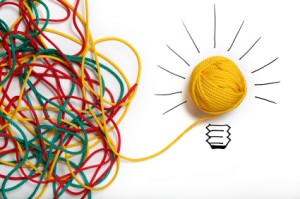(**Please Note: Since this post was published, Contest Builder has been rebranded; it is now Compete. Learn more here.)
The topic of gamification has been getting a lot of attention. It sounds like a great idea – making work more game-like, and creating friendly competition within a sales or service team. But many still wonder how much they want to invest in that idea, and what kind of results to expect.
 Over the last year since we launched the initial version of our contest/gamification app, Contest Builder, we’ve spoken to hundreds of sales managers and heads of sales operations. In that time, we’ve learned how companies are approaching the use of gamification within their organizations. We’ve also signed up a nice roster of clients who have shared metrics and success stories of their own. Below is a summary of what we’ve gathered.
Over the last year since we launched the initial version of our contest/gamification app, Contest Builder, we’ve spoken to hundreds of sales managers and heads of sales operations. In that time, we’ve learned how companies are approaching the use of gamification within their organizations. We’ve also signed up a nice roster of clients who have shared metrics and success stories of their own. Below is a summary of what we’ve gathered.
Adoption Matters – Big Time
Investing in a corporate CRM system, with salesforce.com being the most common for a sales or service organization, is an expensive proposition. According to research from Destination CRM, a company with 50 salespeople will spend $200,000 in their first year alone on the software and related services and support. A company with 200 users can easily spent close to $2 million when considering software , implementation services, and internal personnel to manage. In our own informal poll with 150+ sales managers, only 29% of them said that most of their salespeople are using CRM like they want them to.
So stop for a second and think about how much you’re investing in your CRM system, and how many of the end users are really using it like you want them to. Your vision when purchasing the system was having great data to manage your business. Are you fully realizing that investment?
Metrics & Success Stories
So the opportunity to use gamification makes sense. The adoption problem is a real one. But if you’re like me, you want to see some tangible results and metrics. Following are a few specific examples our clients have shared with us:
- Comcast: Like most sales organizations, sales contests have long been a regular part of their culture to drive key sales behaviors throughout the year. Now that Comcast’s 2,000+ salespeople are on Salesforce, they saw an opportunity to start managing contests within Salesforce to get salespeople more engaged within the CRM system day-to-day. Plus, Comcast empowered local sales managers with an easy-to-use tool to create their own contests. Sales managers are constantly facing some behavior they want to motivate, and now they can without waiting and relying on corporate. When assessing a contest that was run outside of Salesforce, to one that was run within Salesforce using Contest Builder, the latter resulted in a 127% incremental increase in the appointments set each day by the sales team.
- Lawley Insurance: Lawley was struggling with their sales forecasting because of messy Opportunity data within Salesforce. Close dates and sales stages weren’t updated regularly and sales activity wasn’t being logged consistently. So they tried gamifying it with a competition around data clean up. In 2-weeks, Lawley saw 152% more updates to close dates than in the prior 8-months combined. Lawley experienced an immediate impact on their sales forecasting, and is now able to quickly and easily pull together a team competition whenever they need it.
- Detroit Pistons: Similar to Comcast, the Pistons ticket sales team was looking for new ways to engage reps within Salesforce day-to-day. While adoption is key to realizing your CRM investment, what managers really want is more sales. When comparing a contest they ran within Salesforce using Contest Builder to one run outside (managed via basic reports and spreadsheets), they experienced an 18% increase in ticket sales.
- ePrize: ePrize launched a new mobile advertising product that management felt would be an easy add-on. However, the team went several months with little sales of this new offering. The sales team was fully trained, there was plenty of marketing collateral, and the pricing was right. The problem was that people needed to change their habits and get comfortable pitching the new product. So, ePrize ran a competition to reward points every time someone pitched the new product. They rewarded the pitch, not the sale, because pitching the product was the behavior trying to be changed. In a matter of weeks, ePrize saw a 230% increase in sales of this new product, which sustained well after the competition was over. Habits were changed for the long run.
So gamification of a sales or service team is more than fun idea. It works.
To see the detailed presentations around these case studies, visit our SlideShare page.




Great blog! I enjoyed reading it!
Great, but how to add little sales gamification into ecommerce ? We manage Magento Marketplace and are looking to drive sales. Any option to achieve this in B2B ?